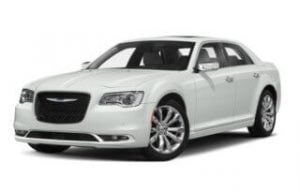Chrysler 300 (incl. 300C & 300M) Oil Type
Select Your Model Year...
Choose the appropriate model year for the Chrysler 300 (incl. 300C & 300M) you are trying to find the oil type & capacity for from the list below.
Chrysler 300 (incl. 300C & 300M)

- Manufacturer: Chrysler
- Data Source: Owner's Manual
You can find 43 different trims for the Chrysler 300 (incl. 300C & 300M) and their corresponding recommended oil type.
The years available stretch from through to 2024 and to view the oil type and capacity you just click to expand.
The Chrysler 300 was first unveiled in 2005. The full-size luxury car then remained on the market for a number of years, until Chrysler announced its retirement in 2023.
Since its release, there have been only two generations. These were known as the LX and LD models. The LD version first made its debut in 2011. These versions sit on unique platforms, respective to each iteration.
Both generations featured a 4-door sedan layout. The first generation was also offered as a station wagon until 2010.
The creation of the model was intended to carry on Chrysler’s long-standing tradition of a luxury car with front-mounted large engines driving the rear wheels. These typically consisted of a V8 engine, which was commonplace for the 300.
Competition for the model included the Dodge Charger, Mercedes-Benz E-Class, Audi A4, and Hyundai Genesis.
Chrysler released a number of various trim levels for the 300. These consist of the typical Base, Touring, and Limited, as well as the 300C, SRT-8, and SRT Design. The latter of which represents the high-performance versions with powerfully tuned V8s.
Despite paying tribute to the Chrysler’s V8 heritage, engine options did not consist solely of V8s. Both iterations were fitted with one of two smaller 3.0 L and 3.6 L V6 engines. Chrysler even offered a turbocharged 3.0 L diesel V6 for both models.
In terms of the V8 heritage, both generations featured 5.7 L Hemi V8s, as well as V8s in excess of 6 liters, depending on the trim level chosen.
Stellantis announced that 2023 would be the final production year for the model. This was due to poor sales, as well as the increasing popularity of electric vehicles.



